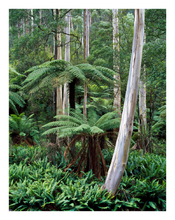Same story : projected how?, hypothetically. Even slide shows were a sliding scale when it came to equipment and standards. That also depends on the subject contrast involved. Still, an entirely wrong conclusion. E100 is right up there with Velvia and even Kodachrome in terms of detail capacity, for all practical purposes.
Projected how? Via a Slide Projector on a pull-down, ~1.8m wide vinyl screen of course:
- Light-controlled room;
- seating distance about 2-3 meters, full screen
- Meridian PC 45mm 2.8 lens.
This setup is sufficient to have a discussion what slide film is what - to tell boys apart from men.
That also depends on the subject contrast involved.
Tested in landscapes, abandoned interior photography, some street and some portraits of friends - the usual stuff I shoot, tripod too. So - a wide range of subjects and lighting situations.
E100 is right up there with Velvia and even Kodachrome in terms of detail capacity, for all practical purposes.
Can't agree, no comparison in my application and experience, and I'm not going to see things differently with my eye only because a stat on a sheet says something else.
And I use the same lab for my rare E-6 needs.
A recent example:
I did return to my childhood home to take some nostalgic pictures of times gone: was shooting Delta 100 and then Ektachrome E100D, then projected slides chronologically. No competition between Delta and E100D whatsoever - same subject, same light.
I have more of E100D left and just don't want to use it - what's the point in having mushy slides? I'll keep it for additional testing. Maybe side-by-side with Provia 100F I have...
But no taking film ever invented is going to be anything but mush at 50X, unless one factors a ridiculous "normal viewing distance" of quite a distance away, which is in fact normal for a slide show.
Is this from experience or just something repeated and taken out of a dark and wet place?
Because I have no complaints against Fuji slides and many BW films. The strongest (and remaining practical) is Aviphot 80 which I like the best from Adox as HR-50 and Scala 50.
Weakest - Fomapan R100 and Ektachrome E100.
Delta is solid reversed, so is FP4+ 125, so is Ferrania P30 - good films can take 50x projection magnification. Poor films - not so much.
Cinema used 135 film and a vertical pulldown the most, meaning that we went to cinema that projected a half-frame image on a grand, wall-sized screen, not mere 1.8m wide. 1/2 the "sensor" area and God knows what factor larger screen sizes, with respective seating distances involved.
Was our cinema going experience marred by mushy movies?
And if there's no difference - if all films should fail to take 50x - how can I see differences and poor E100 performance, not just me?
And how come this shows up in scans too, with hyperfocal scanner, meaning that focusing issues aren't at play here?





 You can't always get what you want
You can't always get what you want


